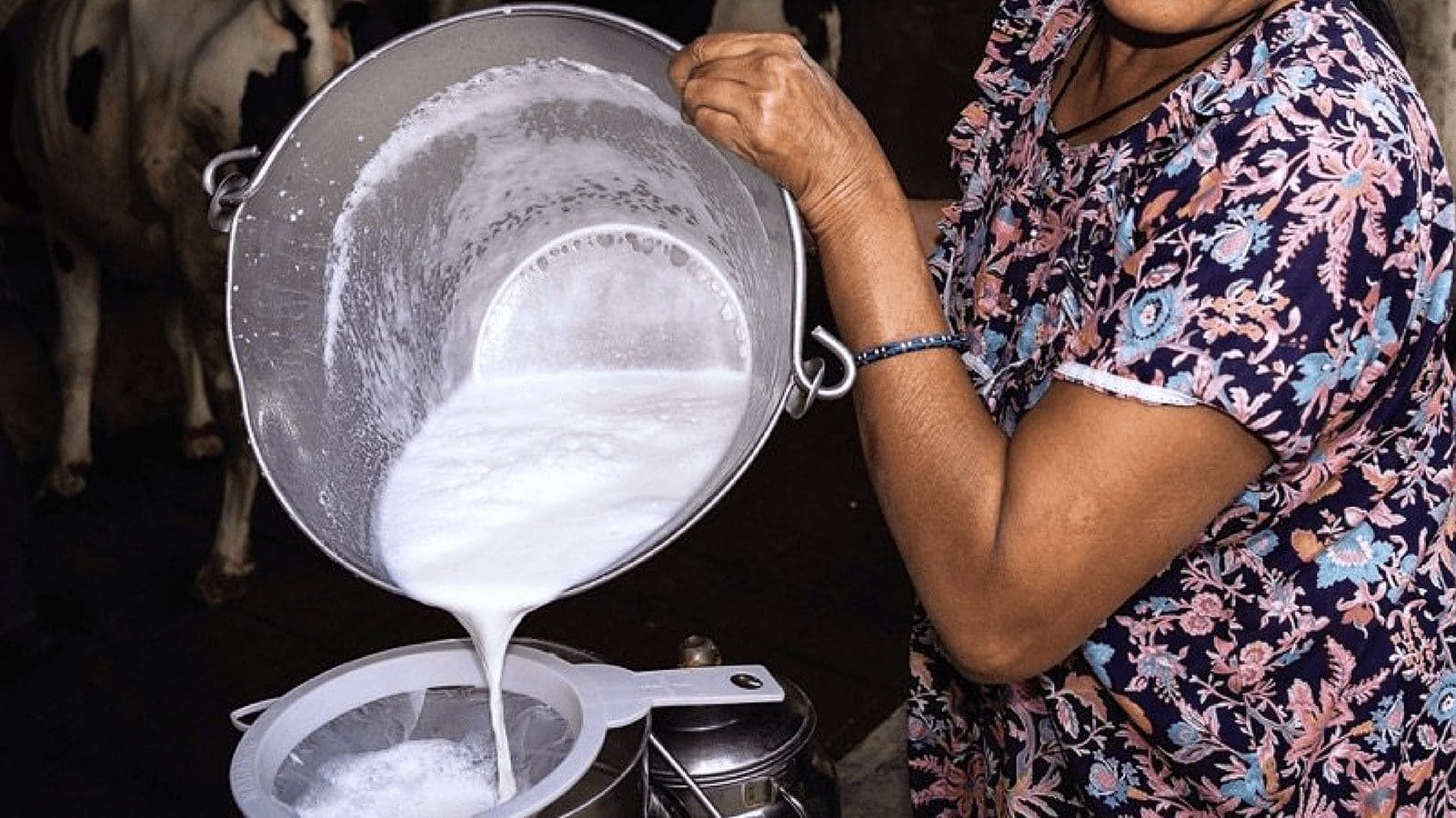India, the world’s largest milk producer, issued a draft of regulations for mandatory fortification of packaged milk through the FSSAI in January 2021 in a bid to address the pertinent issue of Vitamin A and D deficiency in the country which are responsible for night blindness and bone disorders such as rickets and osteoporosis, respectively.
Globally, more than 2 billion individuals, or one in three people, are afflicted by micronutrient malnutrition, according to statistics by the Food and Agriculture Organization of the United Nations, with the World Health Organization further highlighting that 45% of child deaths globally are attributed to under-nutrition.
Dairy products, especially milk, have been identified as one of the most fortified food items globally, despite it being considered a super food as is rich in calcium, vitamins, potassium, zinc, phosphorous and magnesium.
Milk fortification helps in recovering the micronutrients that are lost during processing and the fact that milk is consumed by all population groups, it makes it a suitable medium to address under-nutrition. Also, milk is a good carrier for fortificants, as most are water soluble and is a natural carrier of fat-soluble vitamins, like vitamins A and D.
Global evidence, according to the Food Safety and Standards Authority of India (FSSAI), indicate that mandatory milk fortification legislation was first introduced in 1935. Currently, there are fourteen countries that have mandated milk fortification. Eleven of the fourteen countries fortify milk with both Vitamin A and D. Costa Rica is additionally fortifying with iron and folic acid. China and Canada are adding calcium, in addition to Vitamin A and D.
India, the world’s largest milk producer, issued a draft of regulations for mandatory fortification of packaged milk through the FSSAI in January 2021. The apex food regulator has been considering making fortification of milk mandatory for some time, in a bid to address the pertinent issue of Vitamin A and D deficiency in the country, which causes night blindness and bone disorders such as rickets and osteoporosis, respectively.
India tackles vitamin A & D deficiency head on
The Comprehensive National Nutrition Survey data 2019, suggested a high prevalence of lack of these two vitamins A and D in the population in India, thus becoming a growing public health concern. As per the survey, the prevalence of vitamin A deficiency stood at 18% for pre-school children, 22% school-age children and 16% adolescents. Vitamin D deficiency affected 14% of pre-school children, 18% of school-age children and 24% of adolescents in India.
Recognizing the positive impact of food fortification in enhancing the well-being of its people, FSSAI recently issued provisions for licensing and registration of fortified food products in its Food Safety and Compliance System. The provisions cover processed food products categories, including milk alongside edible oil, juices, rice, wheat flour and maida1 (refined flour), cereal products, baked goods and salt.
Regular intake of fortified milk resulted in 18 percent lower incidence of diarrhoea, 26 percent lower incidence of pneumonia, 7 percent fewer days with high fever and 15 percent fewer days sick with severe illness.
“The +F endorsement is essentially a logo and brand to help consumers recognize certified fortified foods, and hopefully choose to include these in their diets. We also support products under the +F endorsement by putting these on our website,” said FSSAI Director (Food Fortification Resource Centre/FFRC), Inoshi Sharma.
The ‘+F’ logo was developed by FSSAI’s Food Fortification Resource Centre, which was established in 2016 to build capacity for food producers. The Centre also issued new mandates to use fortified staples in safety net programs and the Integrated Child Development Schemes (ICDS).
According to the FSSAI, the new move of branding the food products with the +F endorsement mark, as the country waits for fortification of milk to be made law, will allow for higher levels of fortification to be achieved. Also it will permit the addition of nutrients to the recommended amounts that will translate to provide between 30%-50% of the Recommended Dietary Allowance (RDA). As per the FSSAI standards, milk needs to be fortified with Vitamin A and D at a level of 270 µg RE – 450 µg RE per litre and 5 µg -7.5 µg per litre, respectively. This moves further catapults efforts undertaken by the industry players in driving the milk fortification agenda.
Huge untapped potential remains
India produces 438 million litres per day, in which 130 million litres is contributed by the organised sector, which comprises of cooperatives and private companies. FSSAI notes that the total fortifiable milk (liquid milk) produced by the organised sector is 41.6 million litres per day.
Dr. G.S. Rajorhia, President, Indian Dairy Association (IDA), during the India milk fortification summit held by FFRC in collaboration with GAIN and TATA Trusts, highlighted that the contribution of milk cooperatives to the fortifiable milk quantity is approximately 22 million litres per day, while the private sector contributes approximately 19.6 million litres per day. The total quantity can potentially benefit almost 275 million people. Out of the total 41.6 million litres per day of liquid milk produced, about 17.6 million litres gets fortified currently, reaching about 117 million people.
Despite the market performance showcasing a huge percentage of untapped potential, the current status of milk fortification in the country is very impressive with 55 brands carrying the nutrition claim. With this, the Executive Director of the National Dairy Development Board (NDDB), Meenesh Shah, revealed that the milk cooperatives have made a significant progress to provide fortified milk across the country, covering more than 90% of the geographical areas in India. Around 30 cooperative milk brands in the market are fortified.
He furthered shared that NDDB has developed standard operating procedures for fortification and testing of milk and that they have trained all NABL accredited laboratories on this and knowledge dissemination workshops have also been held.
He highlighted that a lot of consumer awareness activities were done by the cooperatives to ensure that people are aware that the milk they consume is fortified. This was followed by the monitoring and evaluation of these activities.
Delhi Milk Scheme (DMS), Mother Dairy Fruit & Vegetable Pvt. Ltd, Punjab State Cooperative Milk Producers Federation, Krishna Milk Union are some of the dairy cooperatives that avail fortified milk.
Despite the NDDB receiving overwhelming support from the cooperatives in driving the fortification agenda, Gujarat Co-operative Milk Marketing Federation (GCMMF), maker of the popular Amul brand of milk and dairy products, opted to stay out of the board’s milk-fortification programme launched in 2019, in partnership with World Bank and Tata Trusts. The project, scheduled to run for 23 months aims to process about two million tonnes of fortified milk, reaching around 30 million consumers. It is financed by the South Asia Food and Nutrition Security Initiative (SAFANSI), administered by the World Bank, reports Business Line.

Representing the private sector during the virtual seminar was Kailash Gahir, Chief Growth Enabler, Milk Mantra. He explained that the purpose of starting the company was to bridge the trust between the consumer and the producer. With this in mind, Milk Mantra became the first company to fortify milk and it started a different category of milk, which was named as Super Vitamin Milk, fortified with vitamin A and D.
He further stated that “this category has become a very good capacity which contributes to 22% of market share of our entire category of products.” To further boost its production, Milk Mantra has recently received a grant of US$10 million to invest in the quality control infrastructure.
Other than Milk Mantra, some of the private dairy companies in the country currently fortifying their milk as per FSSAI standards include Britannia Industries Ltd, Nestle India, Creamline Dairy Products Ltd, Heritage Foods Ltd, Kwality Ltd, among many others.
Development organizations partner to bridge the gap
Even though India is the world’s largest dairy producer and one of the largest consumers of milk, only 35 to 40 percent of the marketed milk passes through organized channels such as milk unions, dairy producer companies and the private sector. The challenge remains to convert more milk in the unorganized sector to processed and packaged milk and eventually to fortified milk.
To bridge the gap, POSHTIK, a network of government and development partners working on food fortification in India under the guidance of GAIN, has launched the strategic roadmap for scaling up milk fortification in the country.
The objective of the guideline is to engage in effective collaboration to fortify at least 70% of the fortifiable, processed and packaged milk by 2022. Further it seeks to work with other partners and all stakeholders and advocates for mandatory fortification of milk by 2023 and finally, working towards capacitating the industry so that all the fortifiable milk available in India is adequately and appropriately fortified as per the national gazetted standards by 2025.
In a bid to turn the targets into reality, POSHTIK will undertake a landscape analysis of what the progress has been in the market and identify areas which require attention. It will also focus on capacity building of dairies, food safety officers, premix suppliers and NABL accredited laboratories on all the aspects related to milk fortification.
In addition, POSHTIK aims to work with the ministries at the national level and the state level and sensitize all stakeholders about the benefits of fortifying milk by using all available channels – media, civil society and open market channels – to generate demand among consumers. Currently, food distributed in government institutions such as schools or governmental food assistance programmes is fortified. While this has been the standard for government-provided food since 2018, the private sector has only begun to follow suit to provide fortification to certain products.
All these efforts will ensure sustainability in fortification efforts by industry, governments, and development sector partners.
A recent research studied the effects of fortified milk on morbidity in young children in North India. The results showed that regular intake of fortified milk resulted in 18 percent lower incidence of diarrhoea, 26 percent lower incidence of pneumonia, 7 percent fewer days with high fever and 15 percent fewer days sick with severe illness.
In India, a country in developmental transition, facing the dual burden of under-nutrition and infectious diseases as well as lifestyle-related degenerative conditions, the addition of milk to the list of mandatory fortified foods, is a step towards building a healthy population.
This feature appeared in the May/June 2021 issue of Food Business Africa. You can read the magazine HERE









